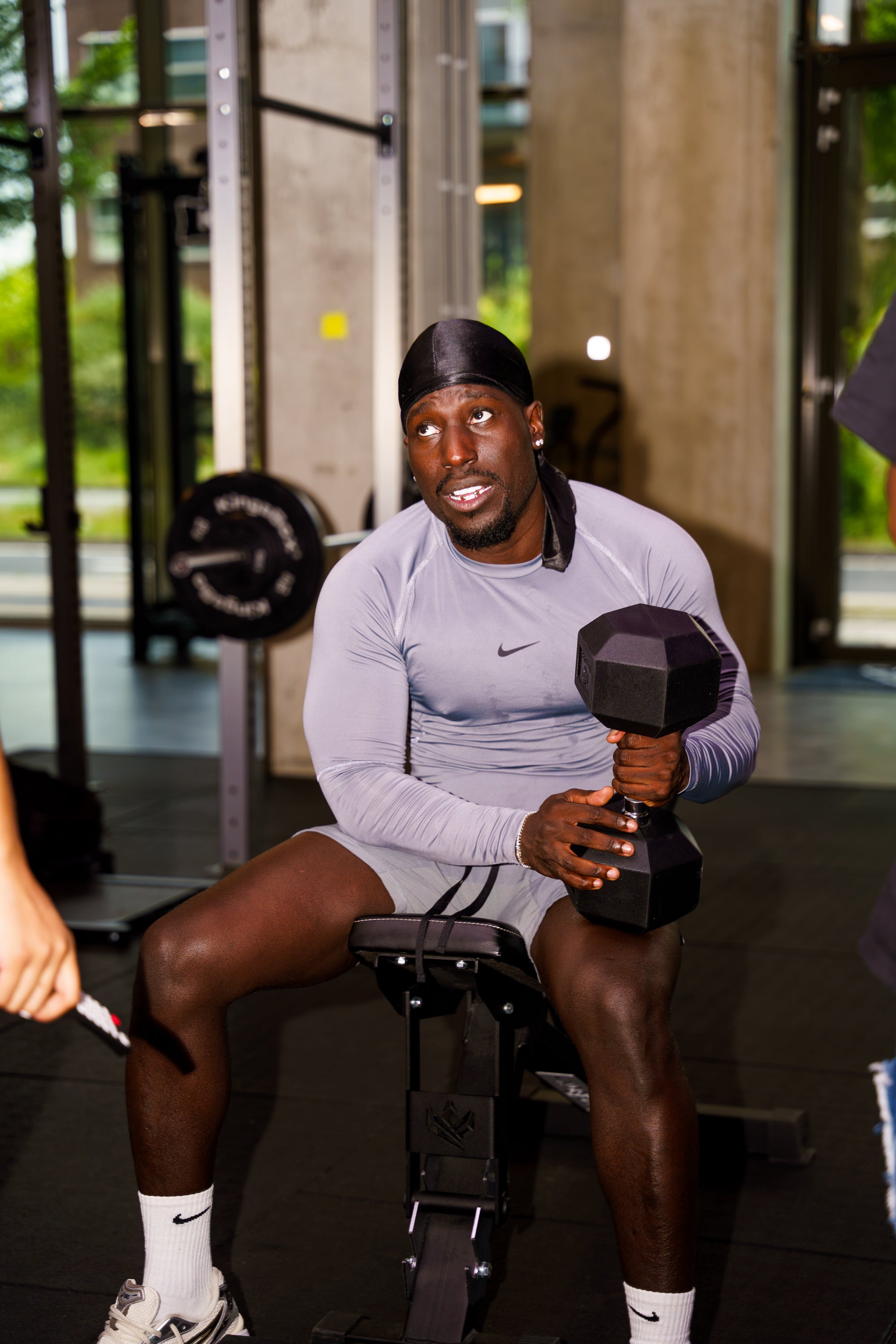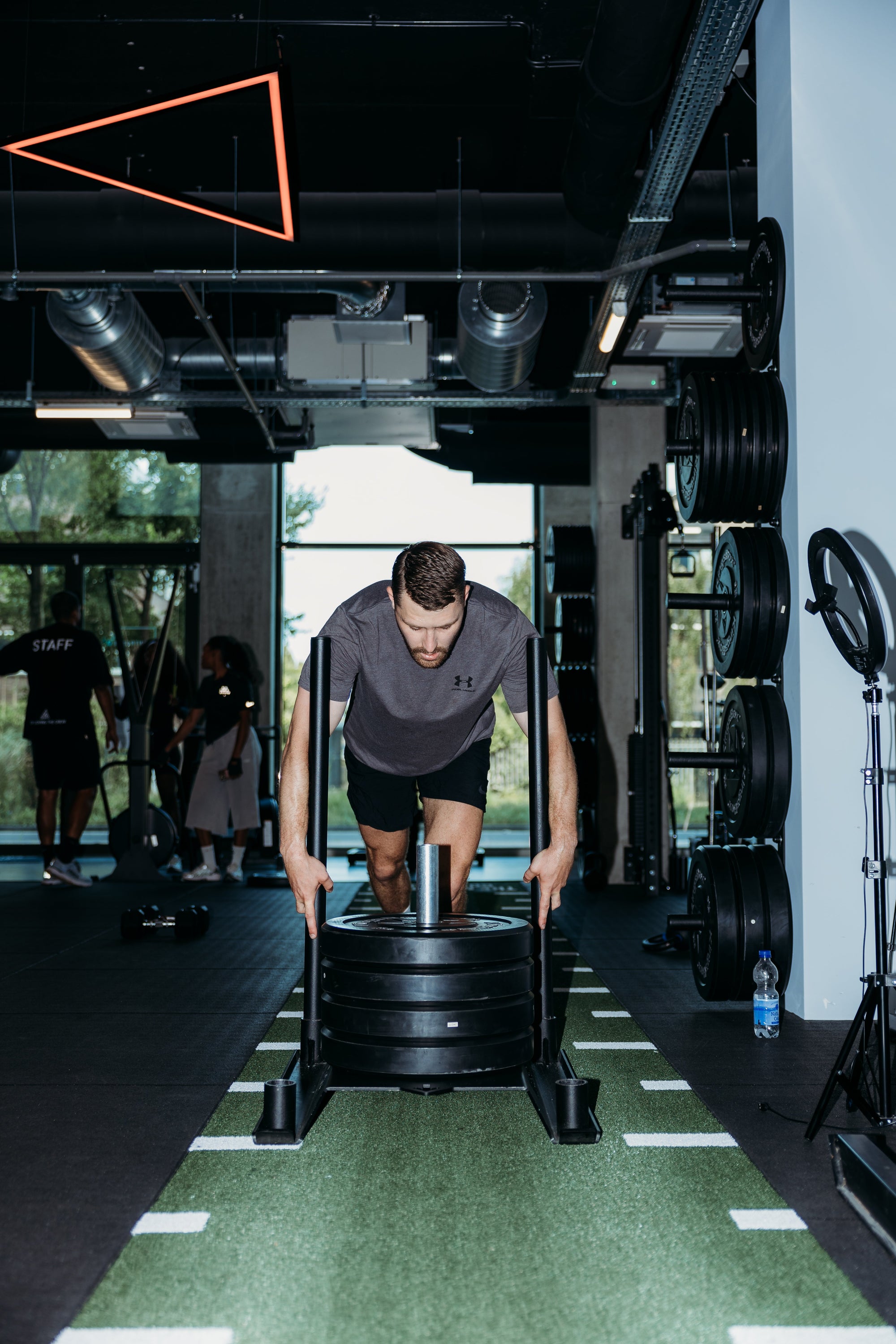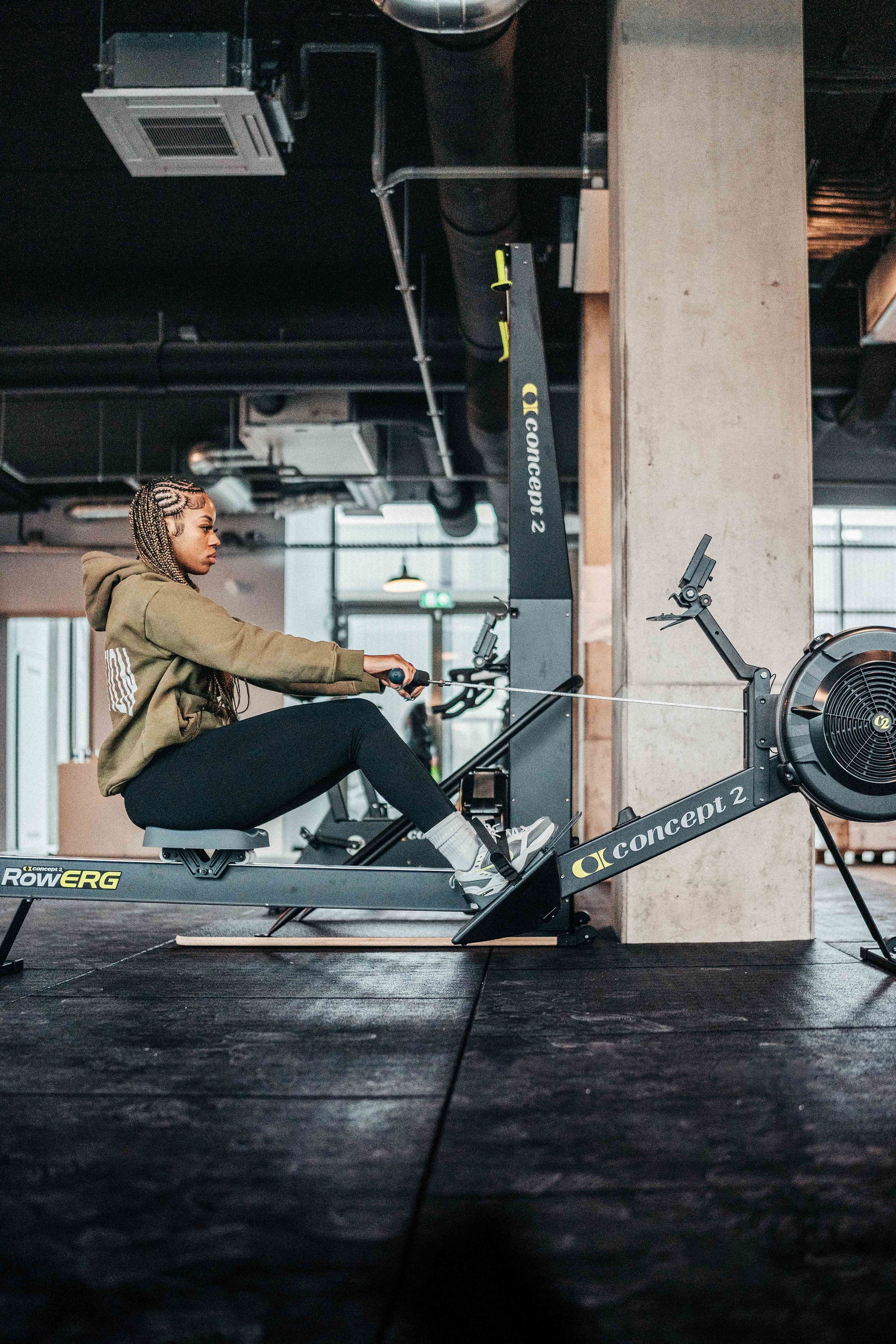Effective Warm-Up Routines for Hyrox: Preventing Injuries and Enhancing Performance
Champion, every great performance begins with a strong start—and that’s exactly what a proper warm-up provides. Picture this: You’re about to crush your Hyrox workout, but instead of jumping straight into the action, you take a few moments to prepare your body and mind. That’s the secret sauce that separates champions from the rest. At BallinFit, we live by the mantra "We make Champions," and it all starts with a warm-up that sets you up for success, prevents injuries, and boosts your performance.
Let’s Get Started: Why a Warm-Up Is a Game Changer
Imagine gearing up for a big race. You wouldn’t just jump out of bed and sprint to the start line without checking your equipment or stretching your muscles, right? Your warm-up is like your pre-race ritual—a chance to wake up your body, activate your muscles, and get your blood pumping. It’s your personal pit stop before you hit the track at full throttle.
The Big Benefits of a Solid Warm-Up
-
Injury Prevention:
A proper warm-up gradually increases your heart rate and blood flow, reducing the risk of strains, sprains, and other injuries. It prepares your muscles and joints for the high-intensity efforts ahead.
-
Enhanced Performance:
When your muscles are warmed up, they work more efficiently. This means you’ll get more power out of every movement, whether you’re sprinting, lifting, or pushing through a challenging Hyrox drill.
-
Mental Readiness:
A well-planned warm-up not only prepares your body but also gets your mind in the zone. It’s a moment to focus on your goals, set your intentions, and get psyched up for the workout ahead.
-
Increased Flexibility and Mobility:
Warm-ups that include dynamic stretches help increase your range of motion, making every exercise smoother and more effective.
Let’s Break Down an Effective Hyrox Warm-Up
Now that you know why warming up is crucial, let’s dive into the specifics. Here’s how to build a warm-up routine that primes you for a killer Hyrox session.
1. Start with Light Cardio
Before you jump into dynamic stretches, get your heart pumping. A few minutes of light cardio is essential to raise your core temperature and get the blood flowing to your muscles.
-
Options for Cardio:
- Jogging: A light jog around the block or on a treadmill for 5–10 minutes.
- Jump Rope: Skip a few minutes to engage your entire body.
- Cycling: A gentle spin on a stationary bike works wonders.
Pro Tip:
Choose a cardio activity that you enjoy. The goal is to gradually wake up your body without exhausting it.
2. Dynamic Stretching: Move to Improve
Dynamic stretches involve active movements where you stretch as you move. Unlike static stretching, which you hold for a period, dynamic stretching warms up your muscles and joints by mimicking the movements you’ll perform during your workout.
-
Examples of Dynamic Stretches:
- Leg Swings: Stand on one leg and swing the other forward and backward. This loosens up your hamstrings, glutes, and hip flexors.
- Arm Circles: Extend your arms and make large circles to warm up your shoulders and upper back.
- Hip Rotations: With your hands on your hips, rotate them in a circular motion to mobilize your lower back and hips.
- Torso Twists: Stand with your feet shoulder-width apart and twist your upper body from side to side. This engages your core and warms up your spine.
Champion Tip:
Perform each dynamic stretch for about 30–60 seconds. Focus on fluid, controlled movements rather than speed.
3. Sport-Specific Drills
Now that your body is warmed up and your muscles are limber, it’s time to transition to exercises that mimic the movements of a Hyrox workout. These drills get you in the zone and fine-tune your technique before you really push your limits.
-
Examples of Sport-Specific Drills:
- Short Sprints: Do a couple of 20- to 30-meter sprints to activate your fast-twitch muscles.
- Wall Ball Drills: Practice a few controlled wall ball squats to ensure your form is on point.
- Sled Push Simulation: Even if you don’t have the sled handy, simulate the movement with bodyweight squats or push exercises.
- Jumping Jacks: A quick set of jumping jacks can help coordinate your whole body and prime your neuromuscular system.
Real Talk:
I remember one of our athletes at BallinFit, Sarah, who always swears by her warm-up routine. She says that those few extra minutes of sport-specific drills made all the difference in her performance. “It’s like my body knows what’s coming next,” she told me. And she’s right—the more your body rehearses the movements, the smoother they become.
4. Cool-Down Warm-Up: Transition Slowly
Believe it or not, a warm-up isn’t complete without a smooth transition from your warm-up phase into your full workout. This transition helps maintain your momentum and ensures you’re fully prepared for the intense session ahead.
-
How to Transition:
- Gradually Increase Intensity: After your dynamic stretches and sport-specific drills, slowly ramp up your effort.
- Mental Focus: Take a few deep breaths, check in with your body, and set a clear goal for your workout session.
- Short Pause: Give yourself a brief moment (around 30 seconds) to let your body shift gears. This isn’t a break—it’s a strategic pause before you unleash your full power.
Champion Insight:
Every champion knows that preparation is half the battle. By taking the time to transition smoothly, you’re ensuring that when you start your main workout, you’re firing on all cylinders.
Integrating Warm-Up Routines into Your Hyrox Training
Consistency is key. A warm-up should be a non-negotiable part of your training routine. Here’s how you can make it work for you:
Before Every Workout
No matter what type of workout you have planned—be it strength training, cardio, or a mixed Hyrox session—dedicate at least 15 minutes to your warm-up. This routine should become a habit, an essential ritual that signals to your body, “It’s time to perform!”
Customize Your Warm-Up
Listen to your body. If you’re feeling particularly tight or sluggish, extend your warm-up. On days when you’re feeling energized, you might shorten it slightly, but never skip it entirely. Tailor your routine based on:
- The Workout Type: A heavy strength session might require a longer warm-up for your major muscle groups, while a light cardio day might need less.
- Your Current Physical State: If you’re recovering from an injury or feeling extra sore, focus on gentle movements and extra stretching.
Use Recovery Days for Warm-Up Refinement
Even on recovery or lighter training days, a brief warm-up is essential. Use these sessions to experiment with different dynamic stretches and mobility drills. Not only will this keep your body flexible, but it will also help you discover what works best for you on different days.
A Few Words on the Science Behind a Good Warm-Up
Let’s get a bit technical for a moment, because understanding the “why” can make you appreciate the process even more:
-
Increased Blood Flow:
When you start moving, your heart pumps more blood, delivering oxygen and nutrients to your muscles. This prepares them for the upcoming stress, reducing the likelihood of injury.
-
Neuromuscular Activation:
Dynamic movements enhance the communication between your brain and muscles. This “wakes up” your body and sharpens your coordination, ensuring that your movements are precise and efficient.
-
Temperature Boost:
Warmer muscles are more pliable and less prone to tears. A good warm-up raises your muscle temperature, which improves flexibility and performance.
-
Mental Preparation:
A focused warm-up isn’t just physical—it’s mental too. It helps you transition from your day-to-day routine into a mindset that’s ready for intense focus and challenge.
Research shows that athletes who incorporate thorough warm-ups not only reduce their risk of injury but also see measurable improvements in performance. At BallinFit, we incorporate these scientific principles into every training session, ensuring that every champion is ready to push their limits safely.



